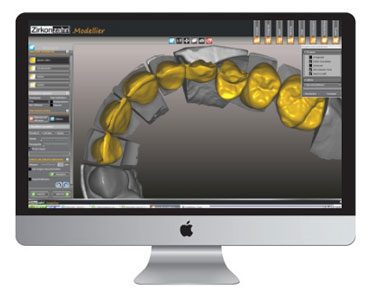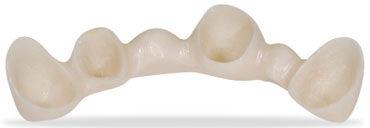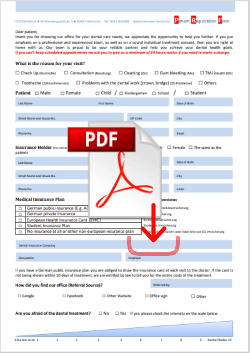Dental CAD-CAM
TOLERANCE, DURABILITY AND AESTHETICS ARE AMONG THE FEATURES THAT YOU SHOULD EXPECT FROM ADVANCED DENTAL RESTAURATION
CAD / CAM Technology For Manufacturing Dental Crowns and Bridges
Computer Aided Design and Computer Assisted Milling (CAD/CAM) takes the world of dentistry to a new level. Fabricating conventional lab products involves technique sensitive procedures and material inconsistencies. Often the integrity of a restoration is subject to human error in such areas as waxing, investing, casting and soldering.
Zirconia Is The Foundation- Porcelain Is The Canopy
Precision milling of purely engineered Zirconia from a Computer Aided Design ensures a stronger restoration with clinical predictability. The evolution of CAD/CAM technology has taken us from a single crown to having the capability of fabricating restorations up to 14 units bridges, MD bridges, inlay bridges, cantilever bridges and implants. The possibilities are endless!

The modern milling machines that we use have the ability to mill up to 14 unit zirconia bridges making it one of a kind. We can now comfortably prescribe metal-free full mouth reconstructions cases with the same strength as a high noble alloy.
Up To 14 Zirconia Units In One Piece
Zirconium porcelain is based on zirconium oxide: it is a material which throughout the world meets the highest standards in highly critical areas of space travel, hip prosthetics and automotive engineering.
Made from industrially manufactured blanks, which are far superior to the laboratory-made porcelains in terms of homogeneity, your denture is precision-burred under microprocessor control – to ensure unsurpassed performance and excellent fit.

The digitaly adjusted data of your crown or bridge is now transfered to the milling machine equiped up to 5-axis milling technology wich cuts the ceramic or titanium block within an average time of 30 minutes to its final form.

